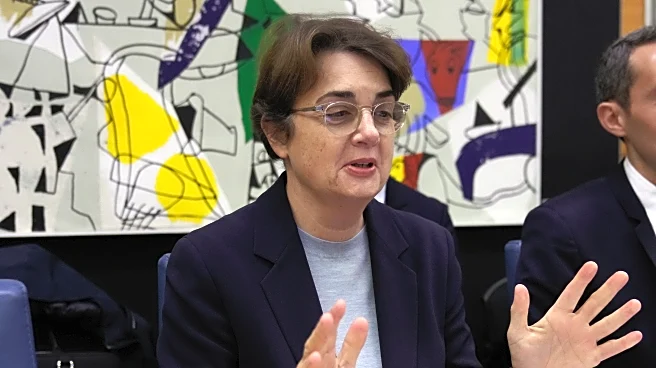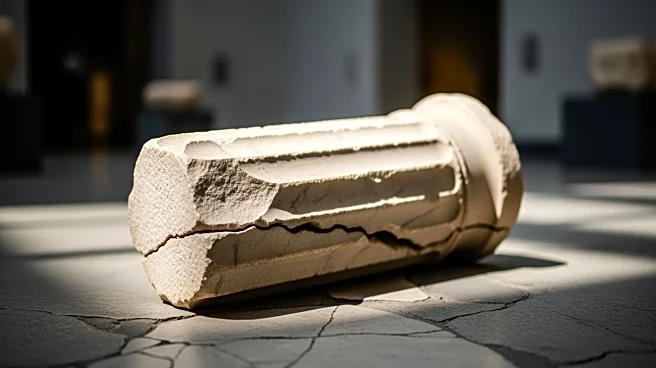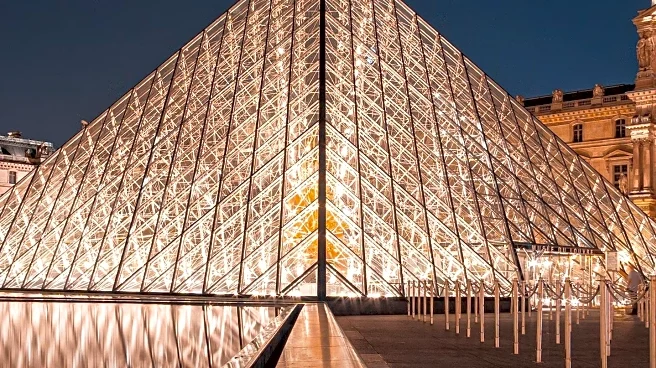What's Happening?
In response to a recent heist at the Louvre Museum in Paris, officials have announced the implementation of stricter security measures. The heist, which occurred on October 19, involved a four-person team
breaking into the Apollo Gallery and stealing eight jewels valued at approximately $102 million. Louvre director Laurence des Cars revealed that the thieves used disc cutters, typically designed to cut concrete, to penetrate the museum's display cases. Despite the theft, the display cases reportedly held up well against the unconventional attack method. As part of the new security measures, the museum plans to install about 100 cameras by the end of 2026 and implement anti-intrusion systems within the next two weeks. Additionally, a new role of 'security coordinator' will be established to oversee these enhancements. The Louvre's modernization efforts, known as the 'Louvre New Renaissance,' aim to address crowding and update infrastructure that has become technically obsolete.
Why It's Important?
The Louvre Museum's decision to enhance its security measures underscores the importance of safeguarding cultural heritage sites against theft and vandalism. The heist not only resulted in significant financial loss but also highlighted vulnerabilities in the museum's security systems. By upgrading surveillance and anti-intrusion technologies, the Louvre aims to prevent future incidents and protect its valuable collections. This move is crucial for maintaining the museum's reputation as a secure and world-renowned cultural institution. The incident also serves as a reminder to other museums and cultural sites globally to reassess and strengthen their security protocols, ensuring the protection of priceless artifacts and artworks.
What's Next?
The Louvre Museum's security upgrades are expected to be completed by the end of 2026, with immediate steps being taken to enhance surveillance and intrusion prevention. The establishment of a 'security coordinator' role will likely lead to more efficient management of security operations. As these measures are implemented, the museum may experience increased scrutiny from stakeholders and the public, eager to see how effectively these changes prevent future incidents. Additionally, the museum's modernization efforts may attract more visitors, necessitating further adjustments to crowd management and infrastructure.












